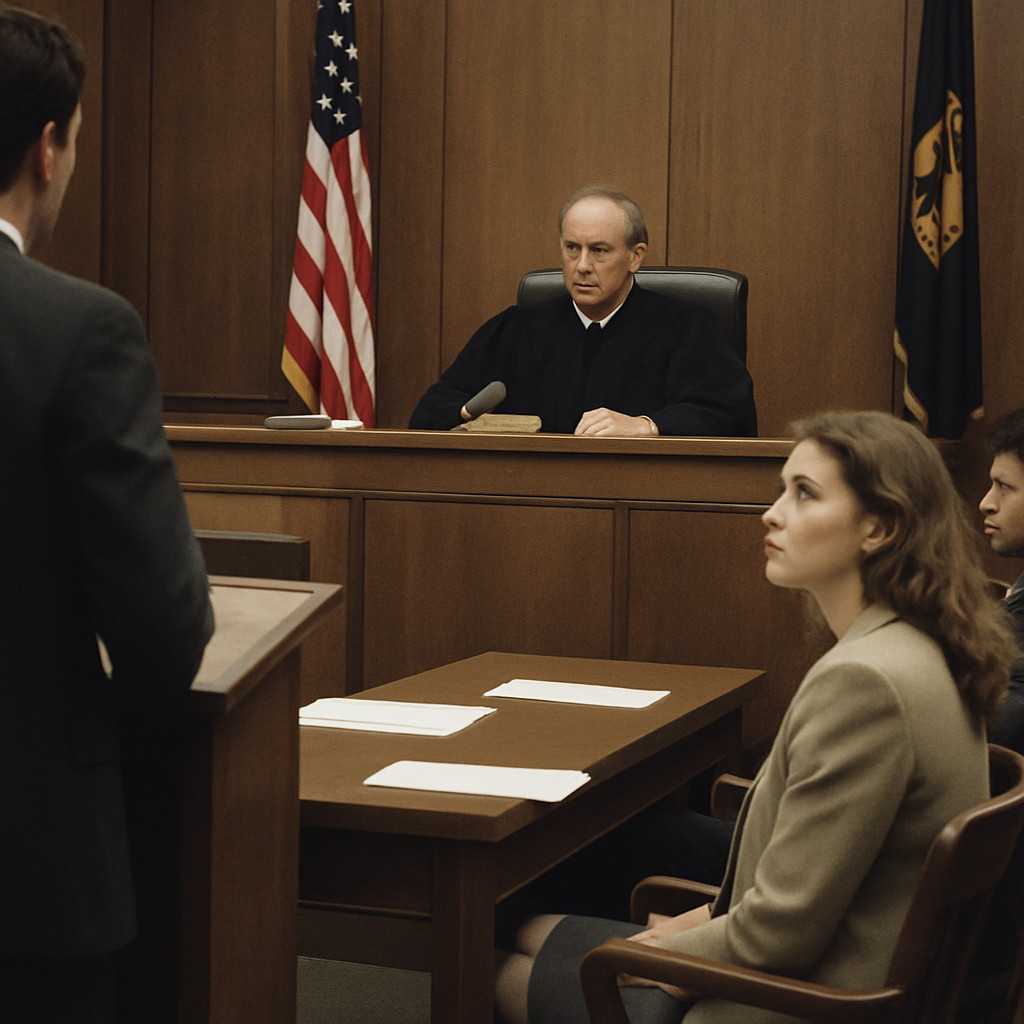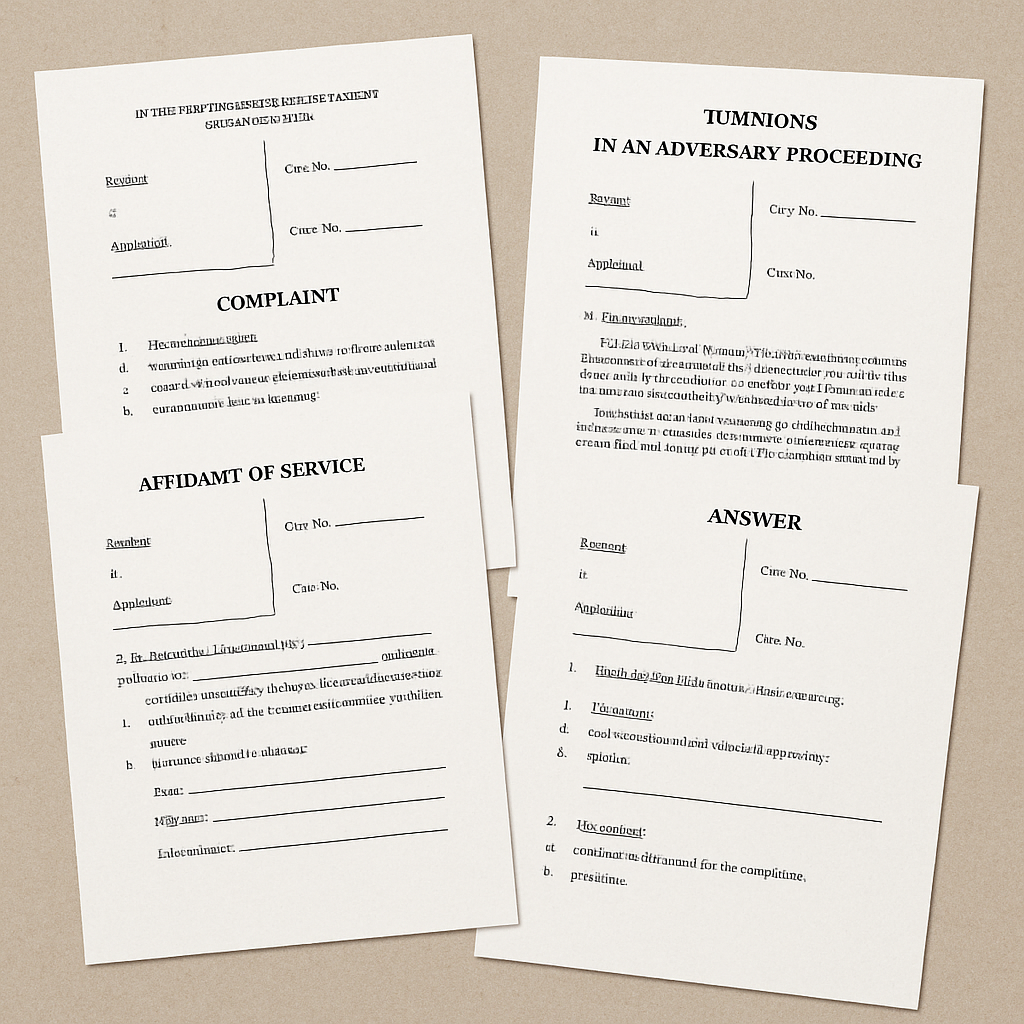Navigating student loans can be daunting, especially when bankruptcy is involved. Many borrowers face financial strain due to overwhelming student debt.
An adversary proceeding might be a solution. But what is it? It’s a legal process within bankruptcy cases.
This process can help discharge student loans under specific conditions. Understanding it is crucial for those seeking relief.
The journey involves proving undue hardship, a challenging task. Legal standards like the Brunner Test play a key role.
Filing an adversary proceeding requires careful preparation and knowledge. It’s not a simple task, but it can be rewarding.
This guide will explore the intricacies of adversary proceedings in student loans. Let’s dive in.
What Is an Adversary Proceeding in Bankruptcy?
An adversary proceeding is a legal action taken within a bankruptcy case. It resembles a lawsuit in many ways.
This process is used to solve disputes between debtors and creditors. It allows both parties to present their cases in court.
Adversary proceedings cover a wide range of issues. These may include:
- Fraud allegations
- Dischargeability of specific debts
- Disputes over property ownership
In the context of student loans, adversary proceedings are vital. They often represent the only avenue for loan discharge.
Debtors must follow strict legal processes to file an adversary proceeding. The process can impact the outcome of bankruptcy cases significantly.
Understanding adversary proceedings helps clarify the complexities of bankruptcy law. It provides a clearer picture of available options.
Why Are Adversary Proceedings Needed for Student Loans?
Student loans often survive bankruptcy because they are typically non-dischargeable. This presents a challenge for those struggling with debt.
To overcome this hurdle, debtors must demonstrate undue hardship. An adversary proceeding is the legal path to argue this case.
Through this proceeding, debtors can seek relief from student loans. The court requires solid evidence to consider discharging the loan.
Key reasons adversary proceedings are needed for student loans include:
- Proving undue hardship
- Requesting loan discharge
- Challenging the non-dischargeability status
Without this process, many are left without options to manage overwhelming student debt. Understanding the necessity of adversary proceedings empowers borrowers. This legal mechanism can be a lifeline for financial freedom.
The Legal Standard: Proving Undue Hardship
The legal standard for discharging student loans in bankruptcy requires proving undue hardship. This standard is challenging to meet but crucial for relief.
Undue hardship must be demonstrated clearly in an adversary proceeding. Courts require convincing evidence to consider discharging student loans.
Debtors often face an uphill battle proving they cannot repay their loans. Factors like income, health, and employment are examined closely.
Key elements to prove undue hardship include:
- Inability to maintain a minimal standard of living
- Circumstances unlikely to improve
- Good faith efforts to repay the loans
Successfully proving these elements requires meticulous preparation and understanding of the law. It is advisable to seek professional help during this process.
The Brunner Test Explained
The Brunner Test is the most common method to prove undue hardship. This test includes three critical criteria.
First, the debtor must show that repaying the loan would cause minimal living standards to drop. Next, this state of affairs is likely to persist. Finally, good faith efforts to repay must be evident.
Key criteria of the Brunner Test:
- Poverty
- Persistence
- Good faith
Navigating this test requires attention to detail and thorough documentation. Success often hinges on presenting a clear, compelling case.
Other Legal Tests and Considerations
Besides the Brunner Test, some courts use alternative methods. The Totality of Circumstances Test examines all aspects of the debtor’s situation.
This method evaluates the debtor’s entire financial context. It provides a broader perspective on their ability to repay.
Understanding these various tests is vital. Legal advice can clarify which test applies. Each case may differ, so tailored legal strategies are crucial.
Adversary Proceeding Student Loans Example: Step-by-Step
Understanding the process of filing an adversary proceeding is crucial. It’s more than just a part of the bankruptcy. This procedure is a detailed legal action.
Here’s a step-by-step overview of what to expect:
- File for Bankruptcy: Start by filing a bankruptcy petition, typically under Chapter 7 or 13.
- Submit an Adversary Complaint: After filing, begin the adversary proceeding by submitting a complaint to the court.
- Serve the Complaint: Serve the complaint on your loan servicer or lender properly.
- Provide Evidence: Gather and submit evidence showing undue hardship, as this is central to your case.
- Attend Hearings: Prepare for court hearings where you’ll present your case and evidence.
- Await a Decision: After the court reviews your situation, it will issue a decision on whether to discharge your loans.

The procedure demands careful attention and understanding of legal rules. Each step requires precise documentation. Missing one can delay or harm your case.
Patience and thorough preparation are keys to success. Missteps can be costly both financially and emotionally.
Seeking expert legal guidance can help navigate this complex process efficiently. It’s essential to enhance your chances of a favorable outcome.
Example Scenario: How a Borrower Sought Discharge
Consider a borrower, Alex, struggling with significant student loan debt. Alex decides to pursue an adversary proceeding to discharge this debt.
After filing for Chapter 7 bankruptcy, Alex initiates the adversary proceeding. With the help of an attorney, Alex submits an adversary complaint citing undue hardship.
The court requires Alex to provide detailed evidence. This includes demonstrating how repaying the loan impacts a minimal standard of living.

In hearings, Alex presents information on income, expenses, and job prospects. The court reviews these factors carefully to decide on the discharge request.
The process is exhaustive and requires rigorous preparation. Alex must effectively convey financial distress for a chance at discharge success.
How to File an Adversary Proceeding for Student Loans
Starting an adversary proceeding involves specific steps. Each is crucial for a successful filing.
First, compile an adversary complaint. This legal document outlines your intention to seek a student loan discharge. Ensure all necessary details are included, clearly stating your case of undue hardship.
Next, file this complaint with the bankruptcy court. After that, serve the complaint to each lender or loan servicer named. Proper service is key to moving your case forward.
You’ll also need to submit supporting evidence. This supports your claim of financial distress, proving why repaying the loan is unfeasible.
Throughout this process, legal support is highly recommended. An attorney can provide guidance and improve your chances of a successful outcome.

Stay informed and prepared. Knowing the necessary steps can help you navigate this legal journey effectively.
Key Documents and Evidence Needed
Gathering the right documents is essential for your adversary proceeding. Documents play a central role in proving undue hardship.
Key Documents Include:
- Detailed financial statements, including income and expenses
- Documentation of attempts to repay the loan
- Medical records if health issues impact your ability to work
Completing this file strengthens your case. Every piece of evidence matters as the court evaluates your situation.
What to Expect During the Process
Facing an adversary proceeding means understanding the legal landscape. The court process can be daunting, but preparation eases the journey.
Hearings will occur where each party presents their case. These sessions require you to articulate and defend your situation clearly.
Additionally, mediation might be part of the proceedings. This step allows for potential agreements before a formal decision is reached.
Typical Steps Include:
- Filing the adversary complaint
- Serving the complaint to involved parties
- Attending scheduled hearings and mediation sessions
Expect a lengthy process, demanding patience and thorough preparation. Knowing the steps helps manage expectations and navigate the proceedings effectively.
Possible Outcomes and What They Mean
The outcomes of an adversary proceeding vary and can impact your financial future significantly. Success means financial relief, but not all proceedings end this way.
The court may decide to fully discharge your student loans, providing complete relief. Alternatively, they might approve a partial discharge or refuse to discharge any amount.
Potential Outcomes Include:
- Full discharge of loans
- Partial discharge, reducing the debt
- No discharge, meaning you remain responsible for repayment
Each decision depends on demonstrated hardship and individual circumstances. Understanding these possible outcomes helps set realistic expectations.
Tips for Success and Common Pitfalls
Navigating an adversary proceeding requires careful preparation. Success often hinges on presenting a well-documented case. Before you file, ensure you gather all necessary evidence, showcasing your financial struggles effectively.
Be aware of common pitfalls that can hinder your case. Overlooking important deadlines or failing to seek legal advice could significantly impact your chances of success.
Tips for Success:
- Prepare detailed financial documentation
- Understand legal requirements thoroughly
- Consult with a knowledgeable attorney
Avoid these mistakes to increase your chances of a favorable outcome.
When to Seek Legal Help
Deciding when to seek legal help during an adversary proceeding is crucial. Consider consulting an attorney early in the process. Their expertise can clarify complex legal standards and guide you effectively.
An attorney can also aid in preparing a robust case. If you’re unsure about legal procedures or feel overwhelmed, professional assistance is invaluable.
Conclusion: Is an Adversary Proceeding Right for You?
Deciding to file an adversary proceeding requires careful thought. Assess your financial situation and legal options thoroughly. An adversary proceeding is complex but can lead to significant relief.
Seeking professional advice is crucial. Understanding your chances and the potential for success can guide your decision-making effectively. Consider TrueScope Consulting for one of their Certified Fraud Examiners to support your adversary proceeding.













